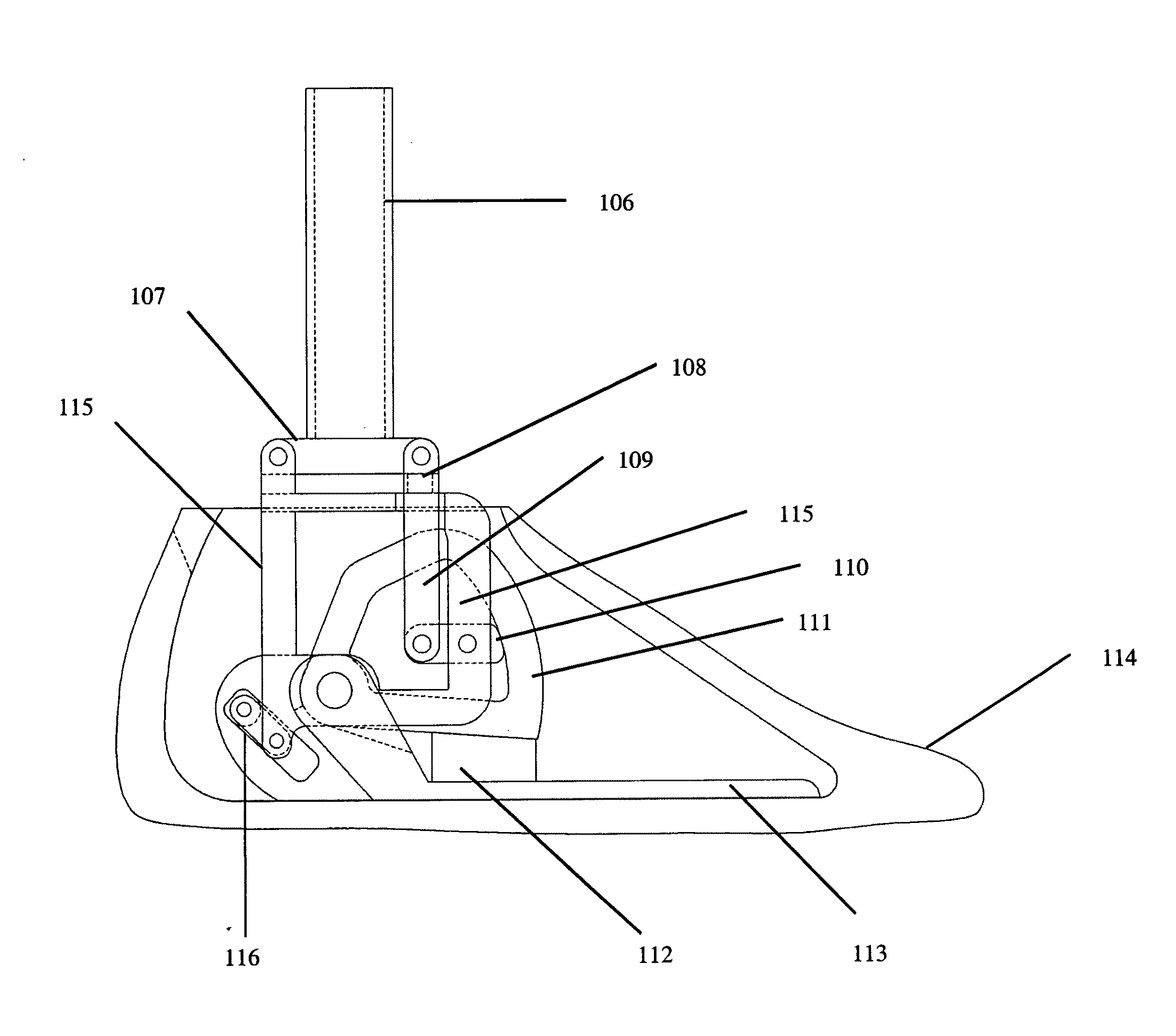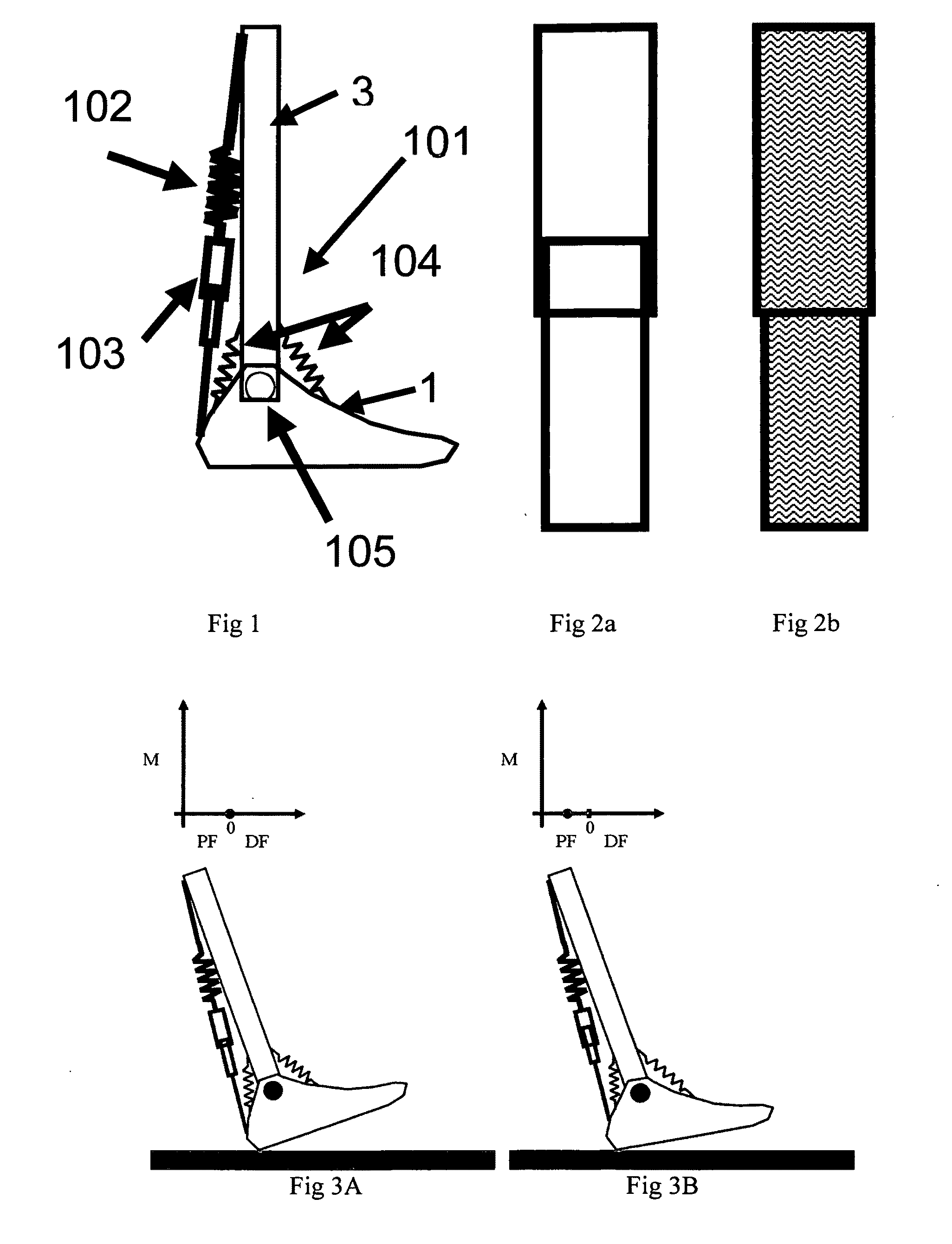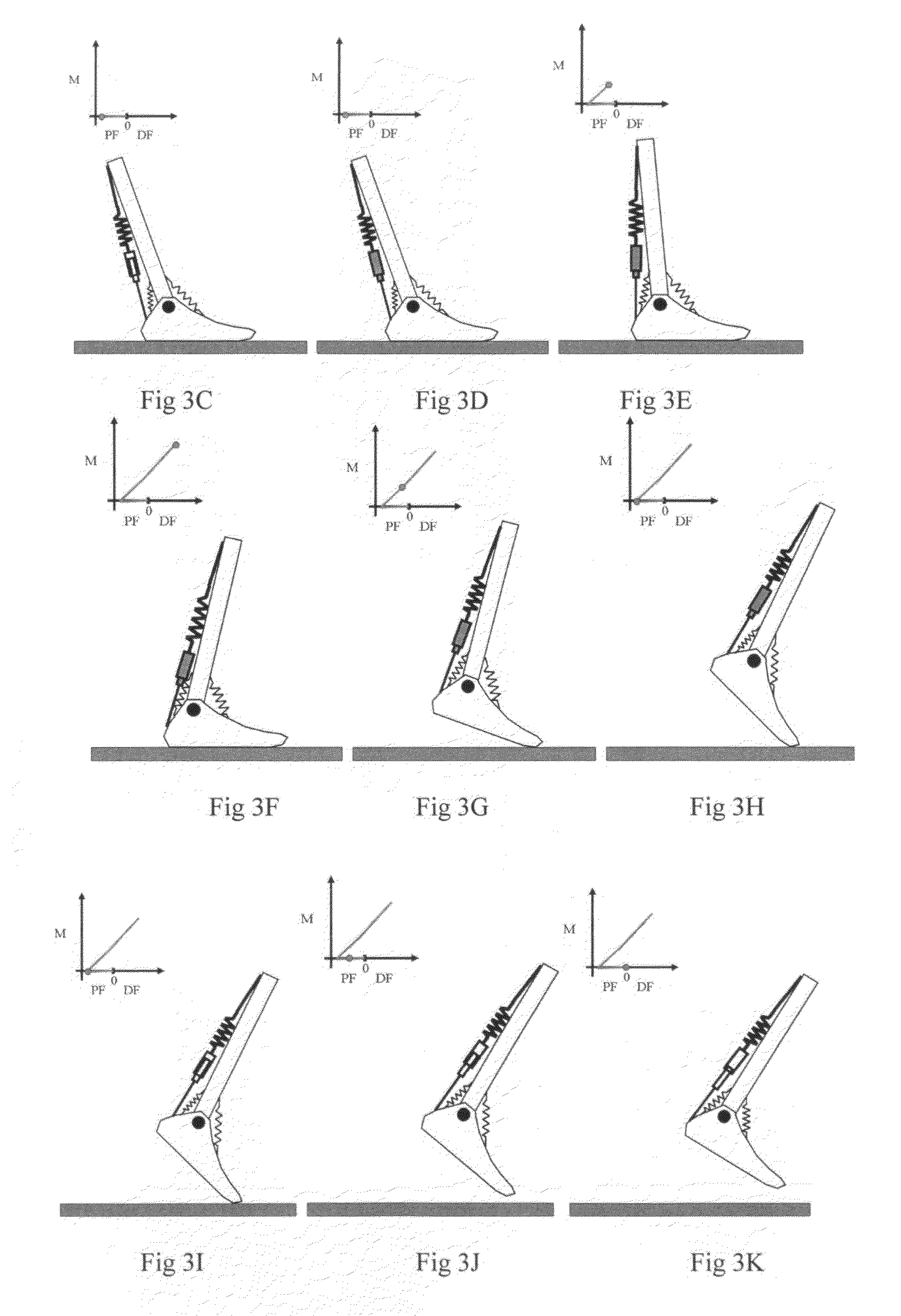[0009]In one embodiment the invention provides a self-adapting prosthetic system, the self-adapting prosthetic system comprising a foot shell, an improved passive adaptive ankle-foot
prosthesis, and means for attachment to a leg, the ankle foot
prosthesis comprising a
footplate, an ankle system, the ankle system comprising a housing, a first
cam, a second
cam, a bracket, wherein the housing and the bracket are fixedly attached to the means for attachment to the leg, wherein the bracket is fixedly attached to the first
cam, wherein the first cam is in movable contact with a part of the second cam and the first cam and second cam comprise a cam
clutch system, and wherein the
footplate comprises an anterior portion and a posterior portion and further comprising an essentially horizontal plantar member, a torsion means, and an essentially vertical member, the vertical member being perpendicular to the horizontal plantar member and operatively attached to the posterior portion of the
footplate, the vertical member further comprising an aperture, the aperture shaped and adapted to confine at least one neutralizing element and a spacer, the neutralizing element being operatively connected to the spacer, wherein the spacer is axially connected to the housing, wherein the housing is axially connected to the vertical member of the footplate, and wherein the second cam is axially connected to the vertical member of the footplate and wherein the torsion means is shaped and adapted for confined placement between the second cam and the horizontal plantar member, and wherein the improved passive adaptive ankle-foot prosthesis is shaped and adapted for placement within the foot shell and wherein the foot shell comprises, in part, a flexible material. In a preferred embodiment, wherein the torsion means is selected from the group consisting of a spring, a tunable spring, a
clockwork spring, a
piston, a
damper, a bumper, and an elastomeric material. In another preferred embodiment the neutralizing element and the cam
clutch are in-line. In yet another preferred embodiment, the second cam comprises an external surface and an internal surface. In a more preferred embodiment, the first cam is in movable contact with the internal surface of the second cam. In a most preferred embodiment the range of movable contact of the first cam in contact with the second cam is not greater than 95°. In another most preferred embodiment, the ankle system has a plantarflexion-dorsiflexion range of from between 80° plantarflexion to about 45° dorsiflexion. In another embodiment the ankle system allows a user to emulate
normal gait. In an alternative embodiment, the ankle system allows a user to approximately emulate
normal gait.
[0011]In another embodiment the invention provides a self-adapting orthotic system, the self-adapting orthotic system comprising a footplate, an improved passive adaptive ankle system, and means for attachment to an ankle, the ankle system comprising the footplate, means for attaching to the means for attachment to an ankle, a housing, a first cam, a second cam, a bracket, wherein the housing and the bracket are fixedly attached to the means for attachment to the ankle, wherein the bracket is fixedly attached to the first cam, wherein the first cam is in movable contact with a part of the second cam and the first cam and second cam comprise a cam
clutch system, and wherein the footplate comprises an anterior portion and a posterior portion and further comprising an essentially horizontal plantar member, a torsion means, and an essentially vertical member, the vertical member being perpendicular to the horizontal plantar member and operatively attached to the posterior portion of the footplate, the vertical member further comprising an aperture, the aperture shaped and adapted to confine at least one neutralizing element and a spacer, the neutralizing element being operatively connected to the spacer, wherein the spacer is axially connected to the housing, wherein the housing is axially connected to the vertical member of the footplate, and wherein the second cam is axially connected to the vertical member of the footplate and wherein the torsion means is shaped and adapted for confined placement between the second cam and the horizontal plantar member, and wherein the improved passive adaptive ankle-
foot orthosis is shaped and adapted for placement on at least one side of the biological ankle of the user or individual. In a preferred embodiment, wherein the torsion means is selected from the group consisting of a spring, a tunable spring, a
clockwork spring, a
piston, a
damper, a bumper, and an elastomeric material. In another preferred embodiment the neutralizing element and the cam clutch are in-line. In yet another preferred embodiment, the second cam comprises an external surface and an internal surface. In a more preferred embodiment, the first cam is in movable contact with the internal surface of the second cam. In a most preferred embodiment the range of movable contact of the first cam in contact with the second cam is not greater than 95°. In another most preferred embodiment, the ankle system has a plantarflexion-dorsiflexion range of from between 80° plantarflexion to about 45° dorsiflexion. In another embodiment the ankle system allows a user to emulate
normal gait. In an alternative embodiment, the ankle system allows a user to approximately emulate normal
gait.
 Login to View More
Login to View More  Login to View More
Login to View More 


